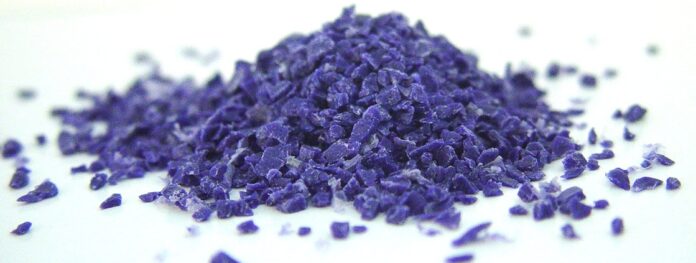BlueWeave Consulting, a leading strategic consulting and market research firm, in its recent study, estimated the global bioresorbable polymers market size at USD 428.28 million in 2022. During the forecast period between 2023 and 2029, BlueWeave expects the global bioresorbable polymers market size to grow at a significant CAGR of 10.85% reaching a value of USD 685.23 million by 2029. Major growth drivers for global bioresorbable polymers market include an increasing demand for medical devices that can be safely absorbed by the body, as well as growing awareness about the benefits of these materials among healthcare professionals and patients. The use of bioresorbable polymers in medical applications eliminates the need for a second surgery to remove temporary implants as they can biodegrade inside the human body. It reduces the risk to the patient post-surgery, while also not posing any threat to their body. These polymers are produced by polymerizing bio-based raw materials using engineered industrial processes. The growth of the industry is being further supported by an increase in demand for products due to technological advancements, advancements in plastic materials, and the development of more sophisticated decontamination equipment. However, high production costs of bioresorbable polymers as compared to conventional polymers and limited availability of raw materials for bioresorbable polymers are anticipated to hinder the growth of global bioresorbable polymers market during the period in analysis.
Global Bioresorbable Polymers Market – Overview
Bioresorbable polymers, also known as biodegradable or bioresorbable polymer materials, are compounds that are safely absorbed by the human body, making them highly sought after in the healthcare sector. These polymers undergo hydrolysis and gradually break down over time, resulting in safe absorption by the body without the need for removal. Polylactic acid, polyglycolic acid, and polycaprolactone are some of the most commonly used bioresorbable polymers, with applications in orthopedics, drug delivery, surgical implants, and various other healthcare uses. Manufacturers typically use vegetable oils derived from sources, such as rapeseed, sunflower corn fiber, castor, soybean, food processing waste, potato, corn, stems, paper mill sludge, livestock waste, and leaves to produce bioresorbable polymers like polysaccharides, proteins, polylactic acid, polyglycolic acid, and polycaprolactone. The bio-based content in these polymers varies depending on the type of feedstock used during manufacturing.
Sample Request @https://www.blueweaveconsulting.com/report/bioresorbable-polymers-market/report-sample
Impact of COVID-19 on Global Bioresorbable Polymers Market
The COVID-19 pandemic had a detrimental impact on the global bioresorbable polymers market. Due to the imposition of lockdowns and restrictions on travel and manufacturing activities, the market experienced disruptions in the supply chain, resulting in a decline in demand for bioresorbable polymers. The pandemic also led to a decrease in elective surgeries and medical procedures, which are the primary applications of bioresorbable Polymers, further affecting the market negatively. However, the demand for bioresorbable polymers witnessed an increase in applications related to the production of personal protective equipment (PPE), such as masks and gowns. The use of bioresorbable polymers in PPE production has recovered post-pandemic as a result of growing demand for sustainable and environmentally friendly materials. Despite the short-term impact of COVID-19 on the bioresorbable polymers market, the increasing focus on sustainable development and growing demand for eco-friendly products in various industries, including healthcare, is expected to drive the growth of the market during the forecast period.
Global Bioresorbable Polymers Market – By Application
Based on application, the global bioresorbable polymers market is bifurcated into Drug Delivery and Orthopedic Devices segments. The orthopedic devices segment holds a higher share in the global bioresorbable polymers market due to the significant demand for these polymers in orthopedic surgeries. Bioresorbable polymers, such as polylactic acid (PLA), polyglycolic acid (PGA), and polycaprolactone (PCL), are commonly used to fabricate temporary implants in orthopedic surgeries, such as bone fixation and cartilage repair. These polymers can degrade over time and get absorbed by the body, eliminating the need for a second surgery to remove the implant. This not only reduces the risk of complications and infections but also eliminates the need for a second surgery, reducing costs for both patients and healthcare providers. Also, bioresorbable polymers offer superior mechanical strength and biocompatibility, making them an ideal choice for orthopedic implants.
Competitive Landscape
Major players operating in global bioresorbable polymers market include Corbion N.V., Evonik Industries AG, Foster Corporation, KLS Martin Group, DSM N.V., Poly-Med Inc., Ashland Global Holdings Inc., Mimetis Biomaterials, Leiber GmbH, GALAXY Polymers, Biomerics LLC, Solvay SA, Merck KGaA, Evolva Holding SA, and PolyNovo Biomaterials Pty Ltd. To further enhance their market share, these companies employ various strategies, including mergers and acquisitions, partnerships, joint ventures, license agreements, and new product launches.
Contact Us:
BlueWeave Consulting & Research Pvt. Ltd
+1 866 658 6826 | +1 425 320 4776 | +44 1865 60 0662














